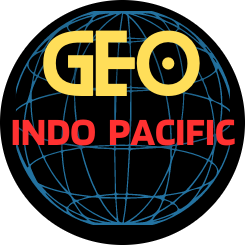
The recent 80th anniversary of Japan’s surrender at the end of World War II inspired multiple publications on how Japan remembers its wartime history. However, there has been less said about the countries that Japan fought and their historical narratives of the war, nor how these countries’ narratives align with Japan’s understanding of its wartime history.
In particular, China’s understanding of its war against Japan has changed significantly over the decades. Alongside Japan’s changing historical narratives of the war, this has caused a divergence in historical memory that fuels tensions between the two countries – and makes hostility more likely.
China’s Narratives of the War
The Chinese Communist Party (CCP) has encouraged two distinctive historical narratives of the war. The CCP’s governing legitimacy is closely linked with World War II; the Chinese Civil War (1945-49), in which the CCP defeated their political rivals to establish control over China, was born out of World War II. While the CCP did fight against the Japanese invaders, they focused on developing their powerbase while the Kuomintang or Nationalists (who served as China’s wartime government) bore the brunt of China’s war effort. Accordingly, weakened by the war against Japan, the Nationalists were less able to resist communist forces.
The Maoist narrative of the war was dominant in China from the formation of the People’s Republic in 1949 until the early 1980s. It was rooted in communist ideology and blamed the war on a militaristic international bourgeois elite who tricked the Japanese people into a war against China.
At the same time, the Maoist narrative portrayed China’s wartime Nationalist government as incompetent in resisting Japan’s invasion and highlighted the efforts of the CCP’s resistance, particularly those of the Eighth Route Army led by Mao Zedong. This is despite historical records from the war indicating that, out of 23 battles and over 40,000 skirmishes between China and Japan, the CCP’s forces only participated in one and 200 of these, respectively.
The characteristics of the Maoist narrative are logical considering its emergence in the early years of the People’s Republic. It served two goals: seeking normalized relations with China’s neighbors while also discrediting China’s wartime government to boost the legitimacy of the new CCP regime.
By the late 1970s, however, the regime legitimacy of the CCP was faltering. Chairman Mao, whose cult of personality had been a cornerstone of the CCP’s regime, died in 1976. Additionally, premising the CCP’s legitimacy on communist ideology was increasingly risky. Deng Xiaoping’s liberal economic reforms in the late 1970s and early 1980s contradicted the ideological heart of the Maoist narrative; it being difficult to premise government legitimacy based on communist ideology while also opening China’s economy to global capitalism.
As a result, the CCP began promoting a nationalist narrative in the early 1980s – the same historical narrative of the war that China holds to today. The nationalist narrative portrays the Japanese nation as inherently aggressive, placing blame for the war with the Japanese people. It acknowledges the contributions of China’s Nationalist government in fighting against Japan during the war, albeit portraying them as a junior contributor to the war effort to the CCP.
The nationalist narrative’s adoption was supported by new school curricula. Chinese schools might study archival evidence of Japanese war crimes. These can be very specific, highlighting human suffering of the war – for example, studying police reports on individual war crimes, like the bayonetting of Wan San, a 64-year old farmer, by Japanese soldiers in 1937. Other efforts to promote the nationalist narrative included new museums and exhibits and new TV shows and films set during the war.
As a result of these efforts, the nationalist narrative was well-established in place of the Maoist narrative by the 1990s. The nationalist narrative has been successful in supporting the CCP’s regime legitimacy. The CCP is now portrayed as the vanguard of the Chinese nation, which led the resistance against foreign invasion by an inherently aggressive neighbor.
At the same time, the promotion of this wartime narrative has shaped China’s modern nationalist movement to be characteristically anti-Japanese and supportive of the CCP based on its efforts in the “War of Resistance Against Japanese Aggression.”
Alignment With Japanese Narratives of the War
China and Japan did not argue over their shared wartime history in the early decades of the post-war period. This is, in part, because the Maoist narrative aligned well with Japan’s traditional narrative of the war.
This narrative was established in the immediate postwar period as part of the Allied occupation’s efforts to demilitarize Japan. In this framing, the Japanese people were led to war by militaristic social elites – a narrative that is compatible with the Maoist narrative’s emphasis on militaristic bourgeois elites.
This led to a scenario in which China did not place blame for the war on the Japanese, while the Japanese did not feel personally to blame. Instead, both blamed a corrupt and aggressive ruling class. Anti-Japanese sentiment from the war was so rare in China during the Maoist period that, when relations normalized between Japan and the People’s Republic in 1972, China renounced its claim to war reparations.
In recent times, however, China and Japan’s historical narratives have been, however. By presenting the Japanese nation as the aggressors, China’s newer nationalist framing of the war contradicts Japan’s traditional narrative. Moreover, Japan’s understanding of its wartime history has also been shifting.
Unlike China, which presented one historical narrative of the war followed by another, contemporary Japan struggles with two simultaneously prominent and competing historical narratives. Japan’s revisionist narrative of the war first emerged in the 1950s but was less popular than the traditional narrative until recent decades. Today, it is particularly popular with younger Japanese people.





